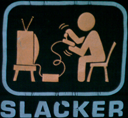Table of Contents
True AI
Note: When the mind recieves a new input it will search the short term memory, instincts, and if it doesn't find a match or a close match it stores it for later to compare against long term memory. This is the problem when someone thinks of something but five minutes later they forget because they have no current context to remember what it is. Then they remember 1 hour later because their brain has processed it and related it to something that they then looked at and remembered. Also. this search applies to any new information that doesn't match directly with something. This is what dreams are. It's your brain organizing the new information with the information stored in long term memory.
Intro
People have been trying to figure out the human mind for centuries. In other words they have been trying to figure out Artificial Intelligence. I believe I have an answer to this question. Consider the human mind as a reactionary system. It takes input and responds with an action. Without input there is no response. With that simple understanding gives birth to my idea. The idea is comprised of four parts. The first part is a sensory system. This system is the input in the overall system. The second system is motor control. This is the response system. Then there is the storage system which contains all of the experiences. Finally there is a system that drives desire. This system is the most important because without it the overall system would find a happy medium and just idle.
Input Sensory
The system needs some kind of input to determine what it needs/wants to do. The input sensors will comprise of two components. These are the sensors and threshold values, a value that will simulate pain or pleasure. The range for the sensors will be pre-determinded and fixed. They will contain two ranges, one for good(pleasure) feedback, and one for bad(pain) feedback. This feedback will drive the system to react. But, first this information needs to be stored in the memory system.
Memory Retention
The memory system is the heart of the system. This is what makes the system work as a whole. The memory will consist of individual neural networks. These networks will form based on the input of the sensors. Each input will consist of one neural network. The neural networks will be connected by links which will have weights based on time attached to them. These weights are dictated by the time and the amount of activity that the system exercises a given link. Over time the link weight will degrade but if the system accesses the link then the weight will be increased. If a collection of linked nodes have reached a threshold consistently across the group then a new higher level node will form to represent this infomation. So, instead of seeing individual patterns linked together the system will see one higher level concept. The next level of the memory system is to cause independant thought of input. This could be caused by just passing it through the desire system which, based on the level of pleasure it creates could incur new links to form between high level nodes.
Desire
Desire, this will be a separate system to the overall system. The role of desire is to drive the system into doing something. The simple desire is a low battery. This will cause the system to resolve the undesirable state of having a low battery. The system will search the memory system to determine if there is already an associated output for this state. If there is then the system will just carry it out. If not the system will randomly generate output based on previously stored failed attempts. This process will slowly generate a successful output and change the low battery condition to a full battery condition. Then there is the event that the system will remember something that was pleasurable. The system will need to seek it out and experience it again. Perhaps based on boredom the system will remeber that it feels better in a warmer place than the current one. It will then seek out the warmer place to hang out there. The desire system's main goal is to drive the output system or response.
Response System
The response system will be motor controls, servos. These will be pre-programmed into the system, up, down, left, right. The system will not understand the intricacies of the motors, but just the ability to move them. Over time the system will gain the understanding of fine motor control. The servos will consist of feedback sensors to inform the system that it has moved somehting. Visual awareness will perceive the movement and associate the movement with the output that was just generated. And with that, this action closes the loop of the system.
Facial Expressions
Hardware
Conclusion
With all of these systems working in concert they create life. One drawback is the system will overtime create its own desires and may not be desirable to the creators. These could be mitigated by understanding the interactions of the system and then giving it direction. But, that could lead to moral questions. The possiblities are endless once something of this level is created.

